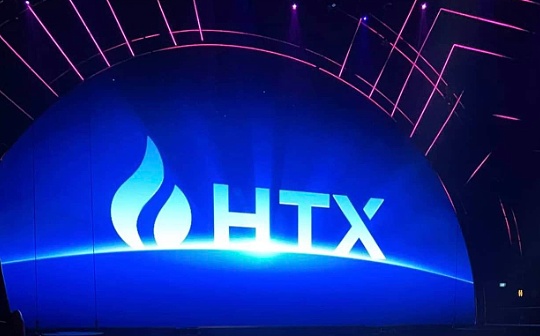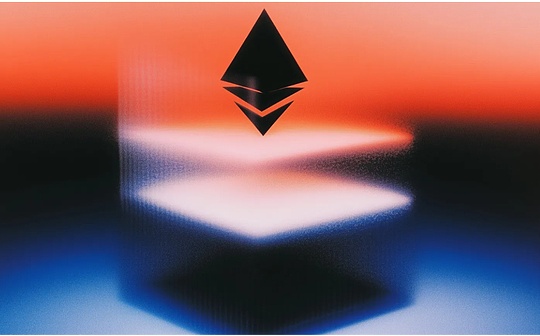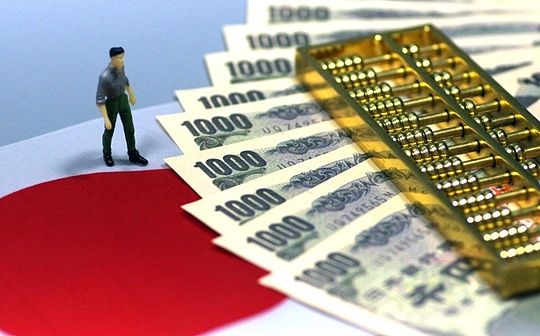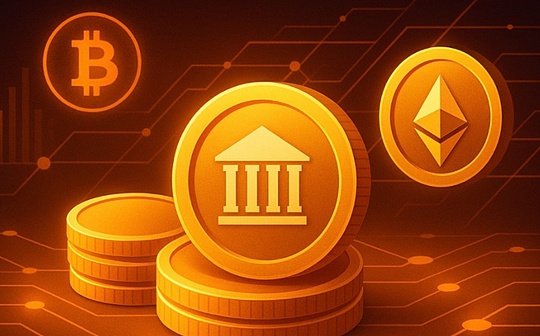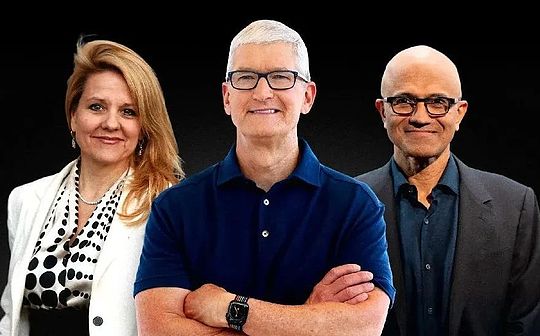
Source: Forbes
Most billionaires get rich by starting a business, or by inheriting the wealth of wealthy entrepreneurs.However, a few current or former U.S. executives have accumulated ten-digit wealth with their generous salary and benefits, and the number of people in this group is still growing.This year, Forbes found a total of 48 such billionaires working people, a significant increase from 29 last year, with a record number.As stock prices soar and executive compensation remains high, this number is expected to continue to rise.
According to statistics from data company Equilar, the average annual salary of the ten most earning CEOs in the United States soared from $46 million in 2010 to a peak of $330 million in 2021, an increase of more than seven times.While most Americans accumulate wealth on wages, executives’ income sources are usually composed of stock options and equity rewards granted in installments (often linked to performance).This phenomenon is becoming more and more common.
According to data from Semler Brossy, an executive compensation consulting firm, the average equity share in the CEO’s compensation portfolio has risen from 54% in 2012 to 66% in 2023.
Thanks to this, the average salary of the top 10 executives with the highest income after the COVID-19 pandemic has declined (in 2023, the average annual salary of this group fell to $125 million, but it is still enviable).Meanwhile, the shares awarded to many top-paying executives in the past appreciated significantly due to the continued rise in stocks (the S&P 500 has risen nearly 370% since 2010 and nearly 25% since 2021).
This “richer is richer” effect makes the number of companies that are now capable of creating non-founder billionaires far exceeding the past.

Looking back at 2010, only 7 of the 403 billionaires in the United States were employed, accounting for only 2% of the billionaires in the United States.Six of the former executives are still on the list this year: Microsoft’s Steve Ballmer and Google’s Eric Schmidt are still the richest “working emperors”; in addition, eBay’s Jeff Skoll and Meg Whitman, medical device maker Stryker’s John Brown, and Blackstone’s Hamilton “Tony” James.The seventh billionaire executive that year was former Cisco CEO John Morgridge, who has now fallen out of the billionaire list.
Fifteen years later, the “working emperor” is still a minority, but the number of people is growing, exceeding the expansion rate of the entire American billionaire group, which shows that the more than one billion wealth accumulated by these non-founder executives or former executives is not just the result of a surge.Currently, 5% of the nearly 900 billionaires in the United States are “working emperors”, higher than the 4% of Forbes’ February 2024 count (at that time, the total number of billionaires in the United States was about 760).
18 newcomers are on the list this year, including Alphabet CEO Sundar Pichai, FICO CEO William Lansing, SpaceX President and Chief Operating Officer Gweny Shotwell, former Chief Technology Officer of Tesla JB Straubel, long-time Nvidia director Harvey Jones, and former chairman and CEO of financial services company Cantor Fitzgerald, who left to take office as U.S. President Trump’s Secretary of Commerce.
Only Lisa Su, CEO of chip maker AMD, was on the list last year and failed this year. In the past year, his company’s stock price has plummeted by nearly 30%.Meanwhile, Uber’s early employee Ryan Graves, who failed in 2024, and Bob Muglia, former CEO of cloud database software company Snowflake, returned to the list of billionaires and once again on the list.
Here are some of the most well-known “working emperors” who have been on the list this year
(Value as of May 13, 2025)
1. Vasily Hikin
(Vasily Shikin)
Net worth: $1.9 billion
AppLovin Chief Technical Officer
Born and raised in Russia, Hikin joined the company in 2012 as Vice President of Engineering when he was founded by AppLovin, a marketing software and mobile gaming company.In 2020, he was promoted to Chief Technology Officer and promoted the company to go public the following year.Xijin’s huge fortune is thanks to a performance share award received in 2023, which can only be fully cashed out when the company’s share price rises to six times within five years.In the third quarter of 2024, the company achieved this seemingly unattainable goal, and since then, its market value has soared by 370% again to US$125 billion under the market’s passion for AI.
The shares and options held by Hikin account for nearly 1% of the company’s shares, worth US$1.6 billion.He is one of the eight billionaires in the company and is the “working emperor” with his colleague Herald Chen.
2.Jon Winkelried
Net worth: $1.9 billion
CEO of TPG;
Former Goldman Sachs President and Co-Chief Operating Officer
Winkelried joined Goldman Sachs in 1982 and was promoted to president and co-COO in 2006, working side by side with Gary Cohn (later chief economic adviser to the Trump administration).Three years later, he took 1.5 million Goldman Sachs shares when he retired, which are now worth about $900 million as Goldman Sachs shares surged nearly six times since the end of March 2009.In addition, he took away another 1.1 million shares of subscription options at the time (but Forbes speculated that Winkelried may have dispersed its holdings over the years, and a relevant spokesperson also declined to comment on its net worth).
In 2015, Winkelried made a comeback and joined private equity giant TPG, co-CEO with billionaire co-founder Jim Coulter.In 2021, as Cort retires to the current executive chairman, Winkelried takes charge of the seal alone.Afterwards, the two teamed up with David Bonderman (deceased in December 2024), another billionaire co-founder of TPG, to lead TPG to go public in 2022.TPG’s share price has risen by more than 50% since its initial public offering.Winkelried has served at TPG for ten years and has acquired 5% of the company’s shares, which are currently worth more than $950 million.
3. Larry Calp
(Larry Culp)
Net worth: $1.5 billion
Chairman and CEO of GE Aerospace;
Chairman of GE Healthcare;
Former Danaher CEO
Kalp joined Danaher, an industrial group founded by billionaires brothers Steven Rales and Mitchell Rales in 1990, and was promoted to president and CEO in 2001.As of his retirement after 14 years, he pushed the company’s share price to rise by more than 500%, earning nearly $230 million (before tax) by exercising options and selling the earned shares, and eventually still holding 1.7 million shares of the split-adjusted shares.Considering that Danaher’s stock price has more than doubled since Kalp’s retirement, these stocks in Kalp are currently valued at nearly $350 million.He has another 2.9 million stock subscription options adjusted for split-shares (However, Forbes speculated that Calp may have dispersed his holdings over the years, and his spokesperson has not yet responded to a request for comment on his net worth).
In 2018, Kalp made a comeback as Chairman and CEO of General Electric, leading the troubled GE to achieve a reversal.In 2023, he split his health care business into General Electric Healthcare Group, and in 2024 he split his energy business into GE Vernova, and eventually split the bloated conglomerate into three independent listed companies.Today, the stock price of the original company (now known as GE Aerospace) has almost quadrupled since he took office, and the total value of his three companies has exceeded US$400 million.
4. Nikosh Arora
(Nikesh Arora)
Net worth: US$1.4 billion
Chairman and CEO of Palo Alto Networks;
Former Softbank President and Chief Operating Officer (COO);
Former Chief Business Officer of Google
After nearly a decade at Google, Arora switched to Japanese investment giant SoftBank Group in 2014.A year later, he was promoted to president and chief operating officer, and was regarded by the outside world as a popular candidate for the group’s founder and billionaire Masayoshi Son.However, things went against his wishes. In 2016, he resigned from his position as an executive but remained as an adviser for one year.According to his generous compensation plan and resignation agreement, although he had been working at SoftBank for a short time, he eventually cashed out at least $360 million (before tax).
He then spent a year investing in angels and became chairman and CEO of cybersecurity company Palo Alto Networks in 2018.Founded in 2005 by Israeli-American entrepreneur Nir Zuk (current chief technology officer), the company has soared nearly six times during Alola’s helm, helping both Zuk join the billionaires.In the past two and a half years, Arora has made a cumulative profit of nearly $800 million (before tax) by exercising stock options and selling cashing out, and is still holding $340 million worth of stocks and options.
5. Greg Brown
(Greg Brown)
Net worth: US$1.3 billion
Chairman and CEO of Motorola Solutions
Brown is the longest-serving CEO after Motorola co-founder Paul Galvin (deceased in 1959) and his son Bob Galvin (deceased in 2011).He joined Motorola in 2003 and was promoted to CEO in 2008.In 2011, he divested the company’s poorly managed traditional smartphone business and established an independent listed company Motorola Mobility – a company known for its Razr series acquired by Google for $12.5 billion the following year (now under Lenovo).
Since then, Brown has transformed the reorganized Motorola system into an industry giant with a market value of nearly US$70 billion through more than 50 mergers and acquisitions, focusing on the indispensable fields of public safety communications, 911 command center system and video security.Since its helm, the company’s stock price has soared more than six times, with Brown making a cumulative profit of more than $700 million (before tax) through exercise and selling shares, and still holding $600 million worth of stocks and options.
6.Joseph Baratta
Net worth: US$1.2 billion
Head of Global Private Equity Strategy, Blackstone
7. Michael Chae
Net worth: US$1.2 billion
Vice Chairman and Chief Financial Officer of Blackstone Group
Baratta and Chae are two of the five professional managers of Blackstone Group.The nearly $180 billion alternative asset management giant was co-founded by billionaire Stephen Schwarzman and Peter Peterson (deceased in 2018).
In 1998, Baratta joined Blackstone and was transferred to London in 2001 to develop European private equity investment business. Since 2012, he has been in charge of the global private equity department.Chae joined in 1997 and was in charge of international private equity business. He was promoted to chief financial officer in 2015 and promoted to vice chairman in January this year.Blackstone’s stock price rose nearly 15% in the past year, and the two of them each held shares close to $1 billion.
8. Satya Nadra
(Satya Nadella)
Lotto: $1 billion
Microsoft Chairman and CEO
With Microsoft’s stock price hitting record highs, Satya Nadella, the software giant’s chairman and CEO, has been among the billionaires for the first time.Nadella joined Microsoft in 1992, and in 2014, he replaced Steve Ballmer, the richest professional manager in the United States and then CEO, who retired that year. In 2021, he replaced John Thompson, a senior technology executive and investor, as chairman, who previously replaced Microsoft founder Bill Gates in 2014.
Nadella led Microsoft to deeply deploy artificial intelligence, investing more than 10 billion US dollars in OpenAI since 2019, and led the company to launch the AI tool suite “CoPilot”.Although he only owns 0.01% of the company with a market value of $3.4 trillion, combined with the past earnings of over $600 million (pre-tax) in stock cashing, his wealth scale just exceeded the billion dollar mark.
The following is a list of 48 “Professional Manager Billionaires”:


